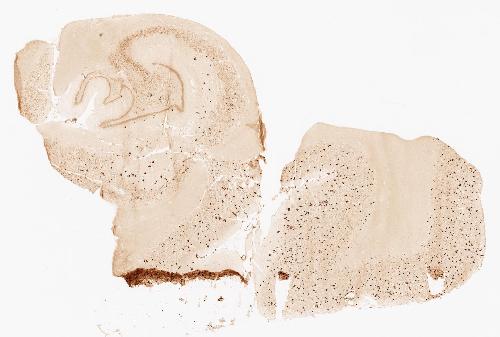The Allen Institute for Brain Science has announced major updates to its online resources available at "brain-map.org">brain-map.org, including a new resource on Aging, Dementia and Traumatic Brain Injury (TBI) in collaboration with UW Medicine researchers at the University of Washington, and Group Health. The resource is the first of its kind to collect and share a wide variety of data modalities on a large sample of aged brains, complete with mental health histories and clinical diagnoses.
"The power of this resource is its ability to look across such a large number of brains, as well as a large number of data types," says Ed Lein, Ph.D., Investigator at the Allen Institute for Brain Science. "The resource combines traditional neuropathology with modern 'omics' approaches to enable researchers to understand the process of aging, look for molecular signatures of disease and identify hallmarks of brain injury."
The study samples come from the Adult Changes in Thought (ACT) study, a longitudinal research effort led by Dr. Eric B. Larson and Dr. Paul K. Crane of the Group Health Research Institute and the University of Washington to collect data on thousands of aging adults, including detailed information on their health histories and cognitive abilities. UW Medicine led efforts to collect post-mortem samples from 107 brains aged 79 to 102, with tissue collected from the parietal cortex, temporal cortex, hippocampus and cortical white matter.
 Antibody labeling of a brain tissue sample from the Aging, Dementia and TBI Study. The dark brown spots are what is known as amyloid plaques, which are implicated in Alzheimer's disease. Credit: Allen Institute
Antibody labeling of a brain tissue sample from the Aging, Dementia and TBI Study. The dark brown spots are what is known as amyloid plaques, which are implicated in Alzheimer's disease. Credit: Allen Institute
"This collaborative research project aims to answer one of the most perplexing problems in clinical neuroscience," says Dr. Richard G. Ellenbogen, UW Chair and Professor, Department of Neurological Surgery. "If a person suffers a traumatic brain injury during his or her lifetime, what is the risk of developing dementia? We simply don't know the answer at this time, but some of the answers might be found in this comprehensive dataset by people asking the right kind of questions. This issue is important because of the inherent risk for everyone who plays sports, exercises or in general, participates in the activities of daily life."
"This study was made possible by the amazing generosity of the ACT participants and their families, incredible collaboration among our partners, and the generosity and vision of the Paul G. Allen Family Foundation," says Dr. Dirk Keene, co-principal investigator and Director, UW Neuropathology. "For the first time, scientists and clinicians from around the world will have access to this unique dataset, which will advance the study of brain aging and hopefully contribute to development of novel diagnostic and therapeutic strategies for neurodegenerative disease."
The final online resource includes quantitative image data to show the disease state of each sample, protein data related to those disease states, gene expression data and de-identified clinical data for each case. Because the data is so complex, the online resource also includes a series of animated "snapshots," giving users a dynamic sampling of the ways they can interrogate the data.
"There are many fascinating conclusions to be drawn by diving into these data," says Jane Roskams, Ph.D., Executive Director, Strategy and Alliances at the Allen Institute. "This is the first resource of its kind to combine a variety of data types and a large sample size, making it a remarkably holistic view of the aged brain in all its complexity."
Researchers focused on examining the impact of mild to moderate TBI on the aged brain, comparing samples from patients with self-reported loss of consciousness incidents against meticulously matched controls. "Interestingly, while we see many other trends in these data, we did not uncover a distinctive genetic signature or pathologic biomarker in patients with TBI and loss of consciousness in this population study," says Lein.
"This new resource is an exciting addition to our suite of open science resources," says Christof Koch, Ph.D., President and Chief Scientific Officer of the Allen Institute for Brain Science.
"Researchers around the globe will be able to mine the data and explore many facets of the aged brain, which we hope will accelerate discoveries about health and disease in aging."
Research to create this resource was funded with a $2.37 million grant from the Paul G. Allen Family Foundation to the University of Washington.
Two other resources have received significant updates in the latest data release. The Allen Cell Types Database now includes gene expression data on individual cells, in addition to shape, electrical activity and location in the brain. The number of cells in the database has also increased, and, in collaboration with the Blue Brain Project, a subset of cells are accompanied by a new robust biophysical model.
The Allen Mouse Brain Connectivity Atlas now includes its first public release of layer-specific connectivity in the visual cortex, including more specific targeting of cells using newly developed tracing methods.
source: Allen Institute